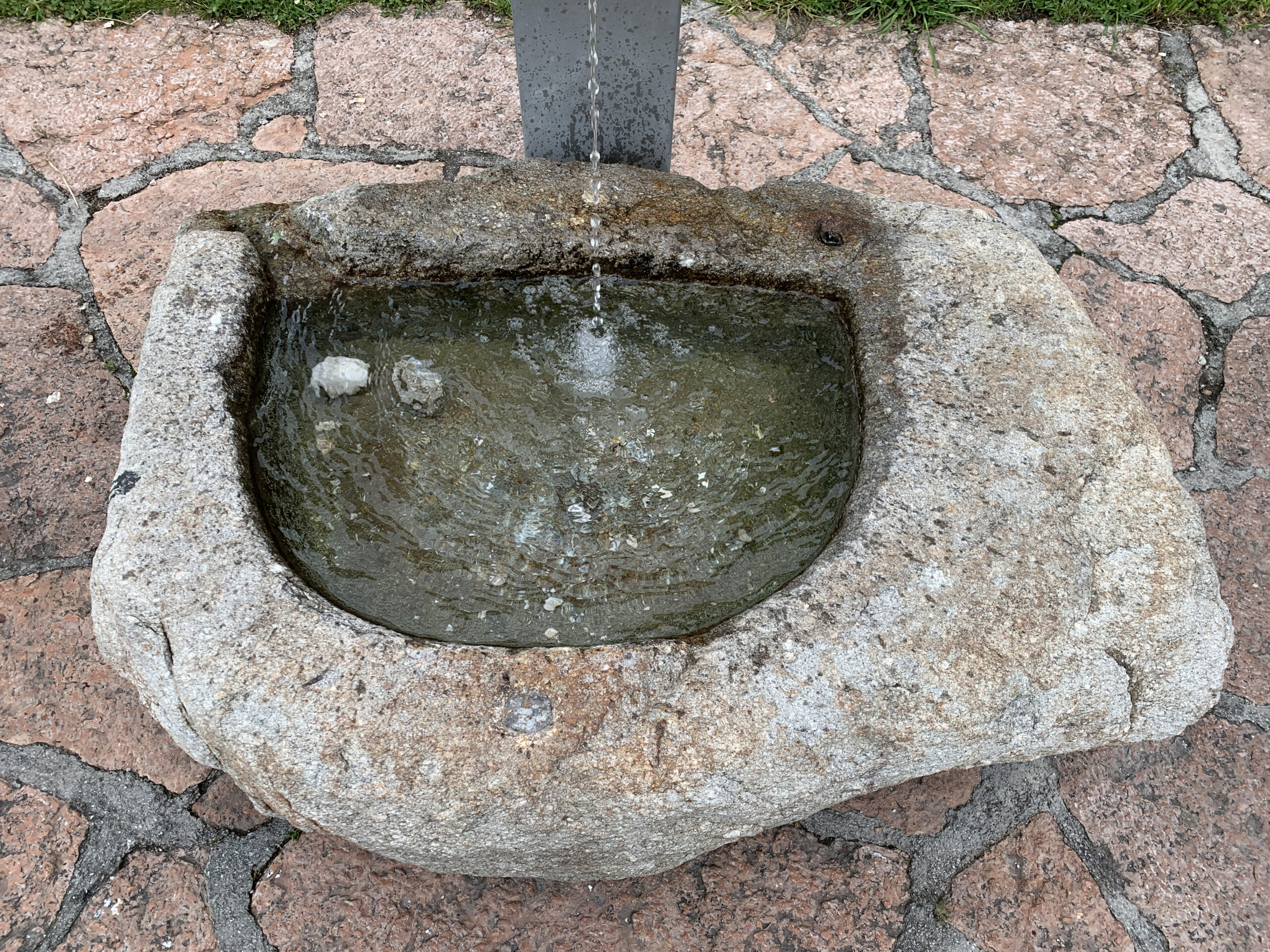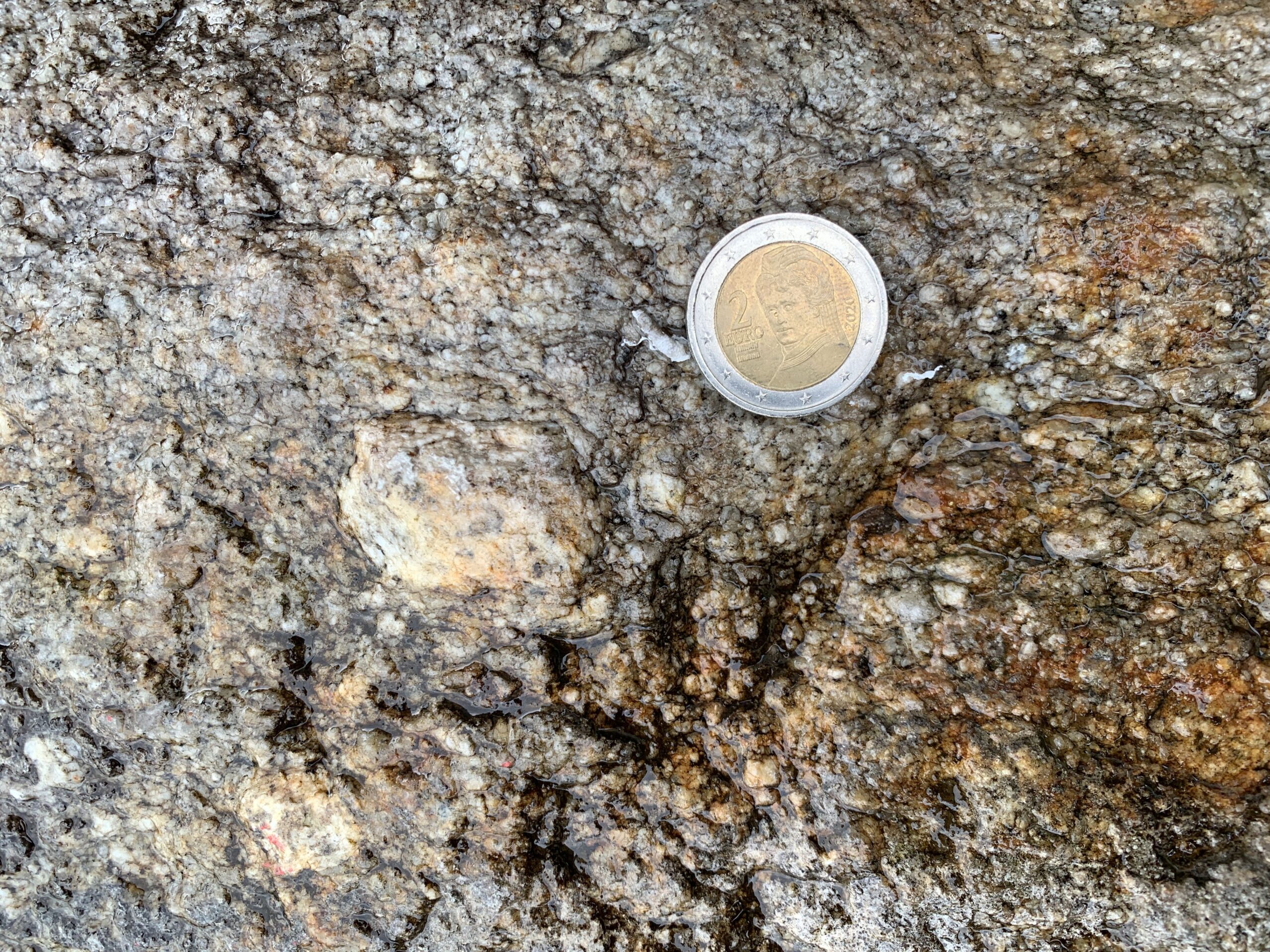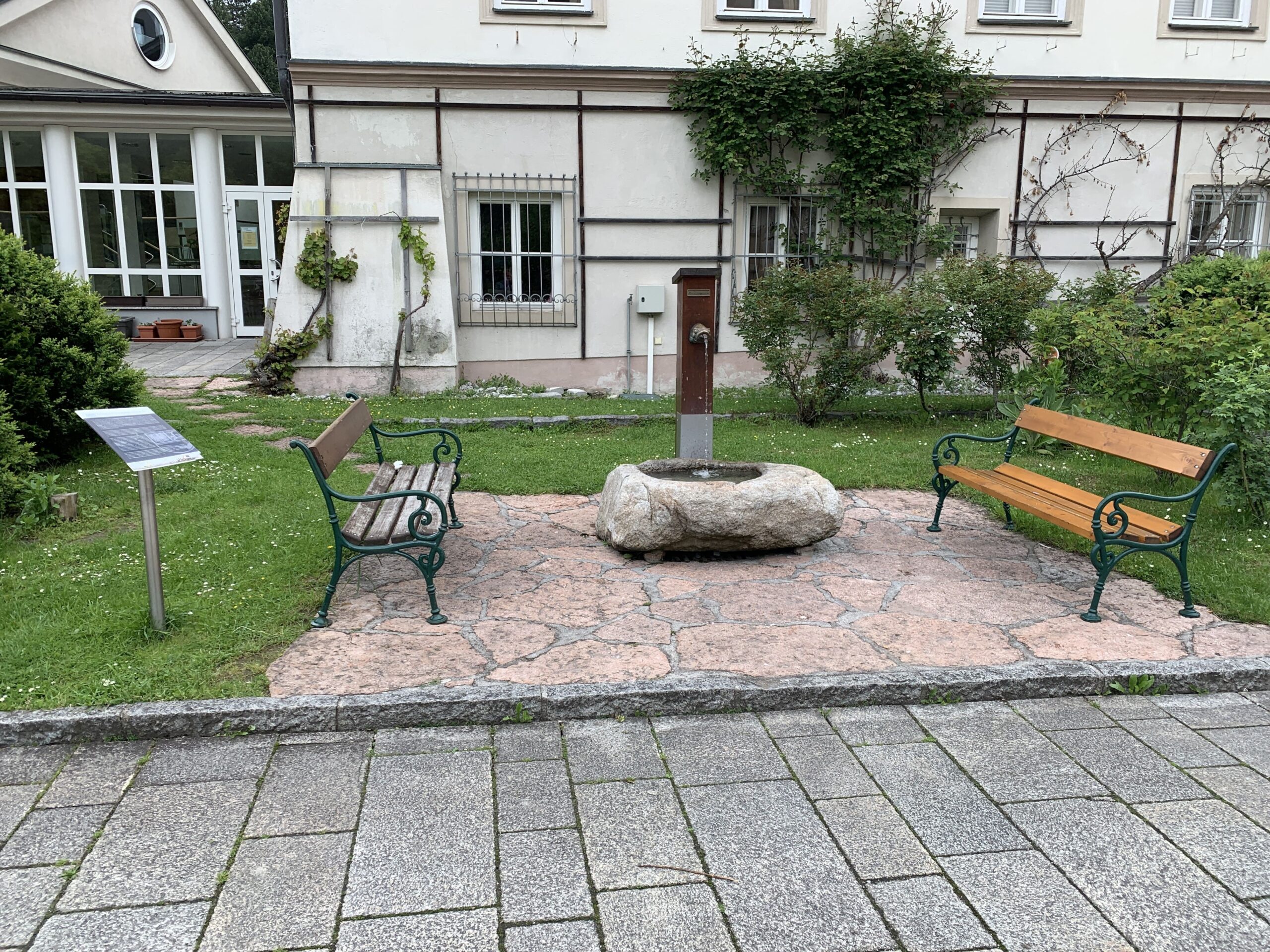Maximilian Fountain
The Maximilian Fountain was originally
set up in the Stegfeld below the
slopes of Buchberg, marked with the
sign ‚Maximilianbrunnen.‘ The water
was considered medicinal. Later,
the Maximilian Fountain served as a
washbasin in the former swimming pool in
Stegfeld.
The fountain was carved from a central
gneiss glacial erratic. Such erratics can be
found south of the Tennengebirge, below
the Hochkönig and the Mandlwand, at
elevations of approximately 1400 to 1700
meters above sea level.
They originate from the central gneisses
of the Hohe Tauern (e.g., Sonnblick Core)
and were transported by the glacial ice
during the Ice Age. When the glaciers
melted, these gneiss blocks were left
behind. A similar central gneiss block
can be found at the exit of Fischergraben
on the northern flank at an elevation of
about 600 meters above sea level. The
Maximilian Fountain was carved from such
a block.
Kids
The history of Bischofshofen
People have been living and working in Bischofshofen for a very long time. Around 5000 years ago, they began to mine copper and people settled on the "Red Rock" on the Götschenberg.
Later came the Celts and then the Romans, who settled in Bischofshofen. In the 7th century AD, Bishop Rupert founded the first monastery in Pongau. Bischofshofen was first mentioned in 1151 and was later important for the bishops of Chiemsee, who lived and dispensed justice there. Today you can still see the crosier and the eagle in the coat of arms of Bischofshofen, which symbolise the diocese of Chiemsee.
The history of Bischofshofen
Bischofshofen is known as the cradle of the Pongau region because it has been an important place to live, work and trade for a very long time. Around 5000 years ago, people lived there on the "Red Rock" and began to mine copper. Later, in the 5th century BC, the Celts arrived and in the 1st century AD the Romans also lived there.
When the Romans lost power in the 5th century AD, Bishop Rupert arrived at the end of the 7th century AD and founded the first monastery in Pongau. The village was first called "Hofen" in 1151 and was later an important centre for the bishops of Chiemsee, who had their residence and administration there. Bischofshofen also had its own jurisdiction. The town's coat of arms features the crosier and bishop's crozier as well as the eagle, the symbol of the diocese of Chiemsee.
The history of Bischofshofen
Bischofshofen is often referred to as the cradle of the Pongau region. Since time immemorial, today's municipal area has been an important settlement, mining and trading location as well as a cultural centre in the province of Salzburg. Around five thousand years ago, people settled on the "Red Rock" near Götschenberg, marking the beginnings of copper mining in Bischofshofen. From the 5th century BC, the Celts settled in the municipal area, and traces of Roman settlements can be found from the 1st century AD. Roman rule north of the Alps collapsed in the 5th century AD. At the end of the 7th century AD, Rupert, the Bishop of Worms, arrives in Juvavum. In 711/712, he founded the first monastery in Pongau, the "Cella Maximiliana". The name "Hofen" was first mentioned in a document in 1151. The diocese of Chiemsee was founded in 1216. The Kastenhof was established by the bishops of Chiemsee as a residence and administrative centre. Bischofshofen also had its own jurisdiction, where justice was administered in the name of the archbishop.
The jurisdiction of Bischofshofen while the bishops ruled is still reflected today in the depiction of the magistrate and crosier in the Bischofshofen coat of arms. The eagle and the crosier are the emblems of the bishopric of Chiemsee, which gave the town its name.





